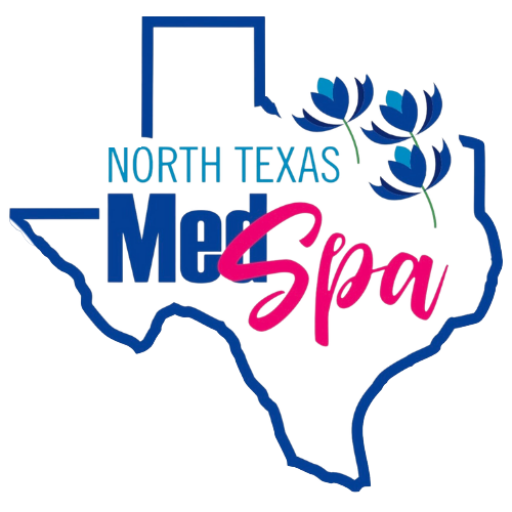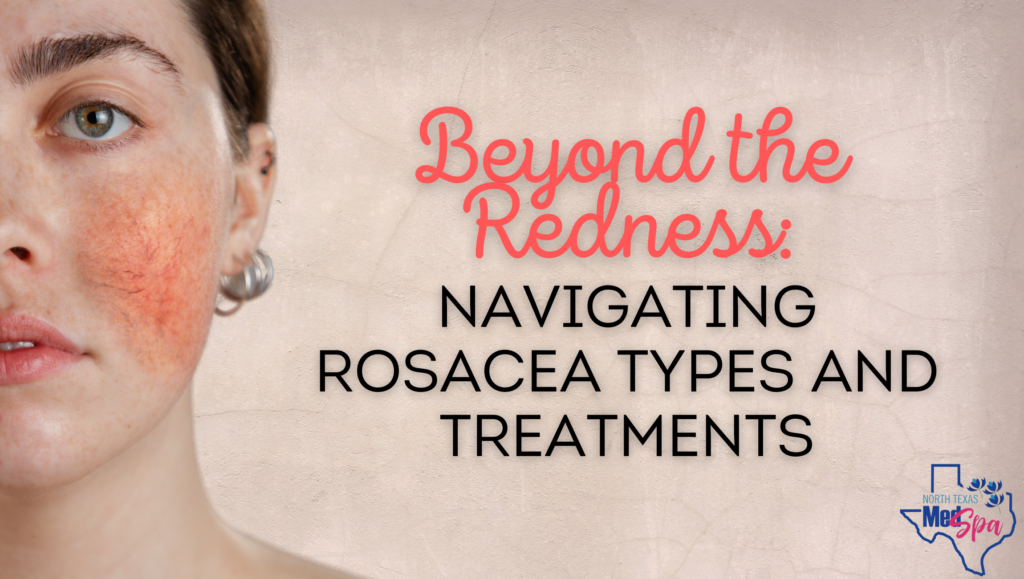
A rosy glow can make you look fresh-faced and beautiful. But it’s not ideal when redness in your cheeks won’t go away or gets worse. Understanding rosacea types and treatments can help you.
Some people assume rosacea is just a minor skin condition. While it’s true that it typically doesn’t lead to health-impacting conditions, that doesn’t mean it’s harmless. Rosacea can have a significant negative effect on your skin’s health. It can also harm your self-confidence, which may be detrimental to your mental wellness.
Fortunately, all rosacea types and severities can be treated. Once you understand how it works and what triggers it, you may even learn how to prevent flare-ups.
What is Rosacea?
Rosacea is a chronic inflammatory skin condition most notable for causing facial redness, usually on the cheeks and nose. In addition to redness, other rosacea types cause bumps and pimples, skin thickening, and eye issues.
While there is no ‘rosacea test,’ healthcare providers diagnose it based on the appearance of the skin and the history of symptoms. Because it can be hidden by or confused with severe acne or dermatitis, a provider may prescribe various treatments to rule out or solve other conditions.
Anyone can develop rosacea, but it’s most prevalent in women over 30 with fair skin. Men don’t have it as often but tend to experience more severe symptoms when they do. Some experts believe it may be just as common in darker-skinned people, but there’s less diagnostic evidence because darker skin hides the signs.
Rosacea is not curable, but most people can manage their symptoms with proper skin care and treatment. Some can even identify and try to avoid triggers that cause flare-ups.

What Causes Rosacea?
Researchers and dermatologists are still unsure what causes this skin condition. Based on many studies, they do have some theories, though.
As with many health conditions, genetics likely play a role for some. Research is ongoing for people with concurrent systemic conditions, such as cardiovascular, neurological, and autoimmune diseases. They may cause an inflammatory response in the skin or changes to the blood vessels. However, experts still aren’t sure if these conditions cause rosacea or if they are simply coexisting.
Other studies show a possible link between higher numbers of Demodex mites (which we all carry) in people with rosacea. Again, research is ongoing, but experts believe more mites may cause an inflammatory immune response from the mites themselves or the bacteria they carry.
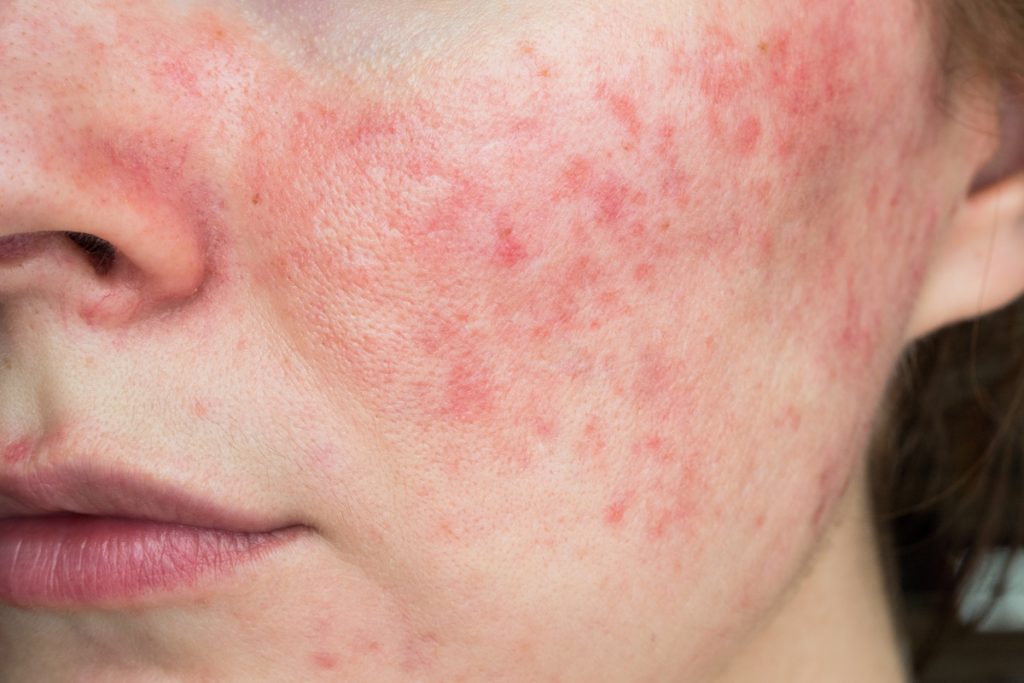
Understanding Rosacea Types
Knowing the different rosacea types will give you a better understanding of how to treat it. Although the symptoms of each are considered different subtypes, many people experience aspects of more than one at a time, and you may need multiple forms of treatment to address individual issues.
Type 1 (Erythematotelangiectatic)
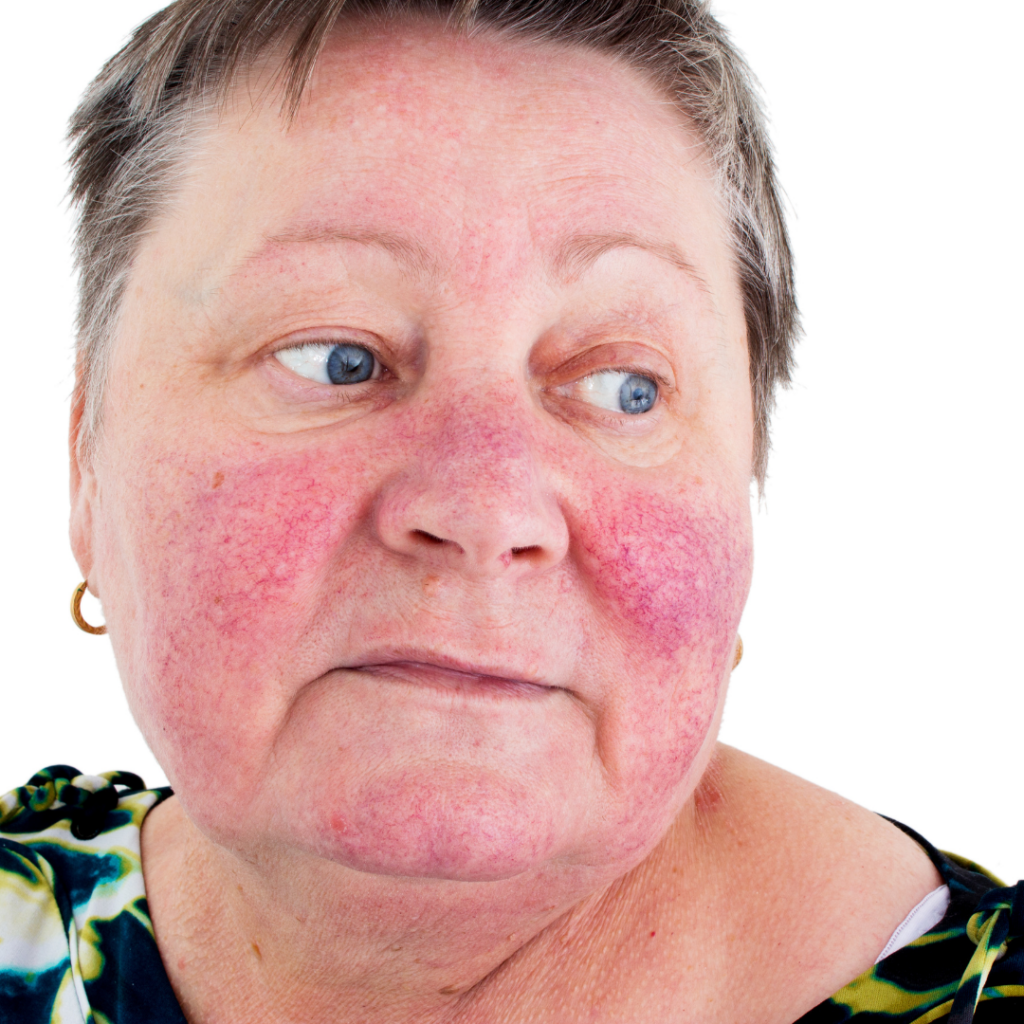
Type 1 is the most common and recognizable form of rosacea, and includes the facial symptoms most people experience first.
The symptoms of erythematotelangiectatic rosacea include:
- Persistent redness
- Frequent blushing or flushing of the skin
- Burning, stinging, or itching
- Enlarged or more noticeable veins (clinically known as telangiectasias)
Fortunately, most people can treat Type 1 symptoms and control the redness and discomfort. However, if left untreated, enlarged veins and deep redness may become permanent and more difficult to hide.
Type 2 (Papulopustular)
The second rosacea subtype is called papulopustular because of the acne-like bumps and whiteheads it causes. Typically, these bumps only occur on the forehead, cheeks, and chin, but some people get them on their chest, neck, and scalp, too.
Like acne, good skin care and proper treatment usually prevent scarring. Unfortunately, some people experience scars if they have particularly severe symptoms that are more difficult to treat or if they pick or pop their bumps.
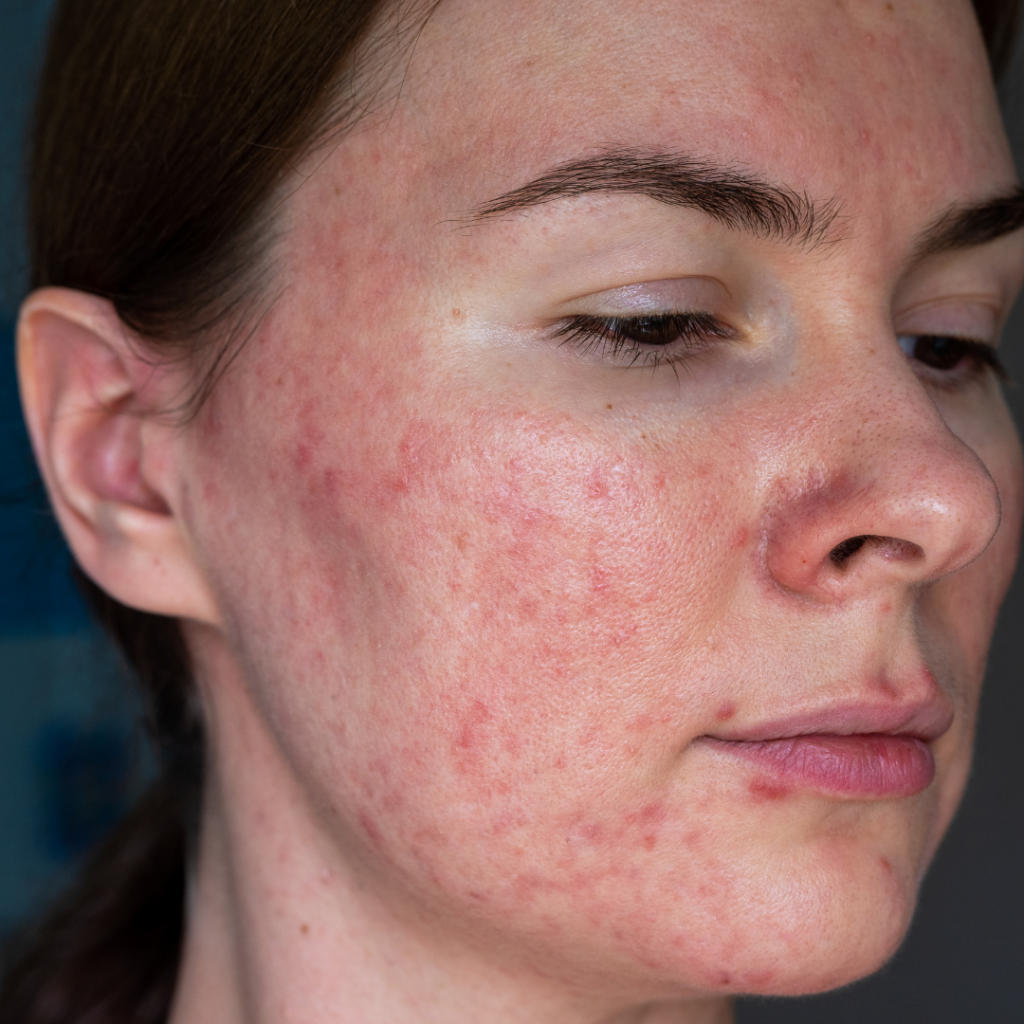
Type 3 (Phymatous)
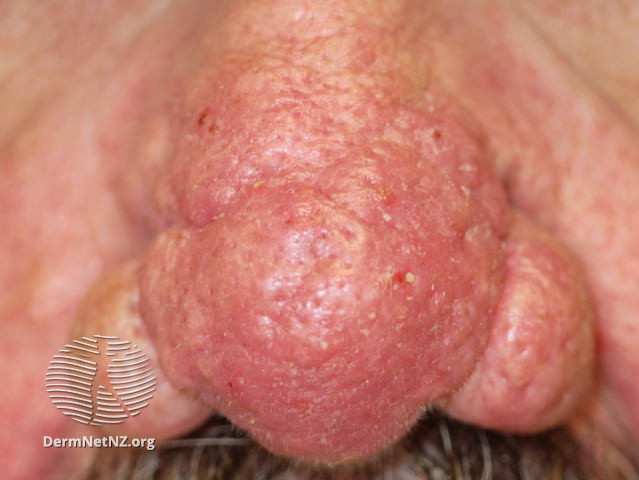
Type 3 rosacea is considerably less common than the first two. Phymatous rosacea causes a thickening of the skin, making it bumpy, swollen, and discolored. While it can occur on the cheeks and other parts of the face, it’s typically seen on the nose. This uncomfortable but treatable condition is also called rhinophyma or ‘bulbous nose’ and is more common in men.
The growth and appearance of rhinophyma may be treated with retinoid medications. However, cosmetic surgery is the only way to reshape the nose and remove the bulk.
Type 4 (Ocular)
Type 4 rosacea occurs in your eyes. The symptoms of ocular rosacea are often ignored or misdiagnosed as allergies and other common issues. These symptoms include:
- Redness in and around your eyes
- Itching, burning, and watering
- Dry or gritty feeling
- Light sensitivity
- Blurred vision
- Recurring eye issues, such as pink eye or sties
Ocular rosacea can happen before, during, or after skin changes. It may even be the first noticeable symptom in darker-skinned people.
If you have frequent eye issues, visit a healthcare provider to determine the cause and prevent complications. You can usually treat symptoms with eye drops and care, but you may need oral antibiotics for more severe cases.
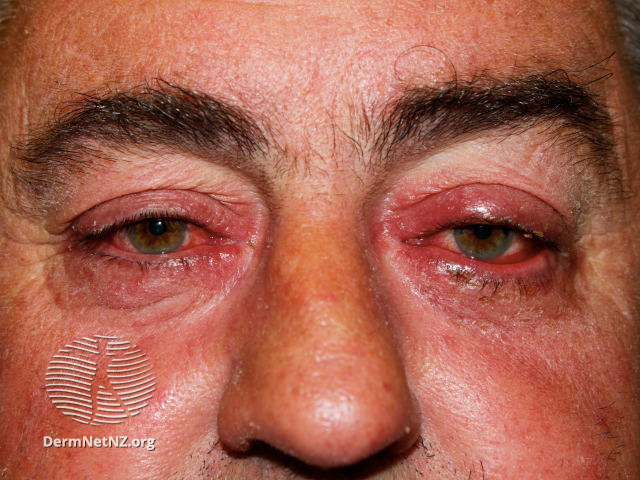
How to Treat Rosacea
There are many treatment options available regardless of what type or types of rosacea you have. You may have to try different things before you find what works for you, but most symptoms can be controlled or eliminated with skincare products, treatments, and medications.
Skincare
One of the most important things you can do to control rosacea is to follow a good skincare routine.
Use gentle, pH-balanced cleansers, avoid harsh scrubbing, and moisturize, even if you have oily skin. Some ingredients to look for in both cleansers and moisturizers are aloe vera, green tea, hyaluronic acid, and ceramides. These calm your skin while providing hydration and protection.
While looking for products with helpful ingredients, you should avoid those with alcohol, added perfumes or fragrances, and essential oils because they dry out the skin and cause flare-ups.
Finally, a proper skincare routine for rosacea ends with sun protection. Use products with an SPF of at least 30, but 50 is even better, especially for fair skin.
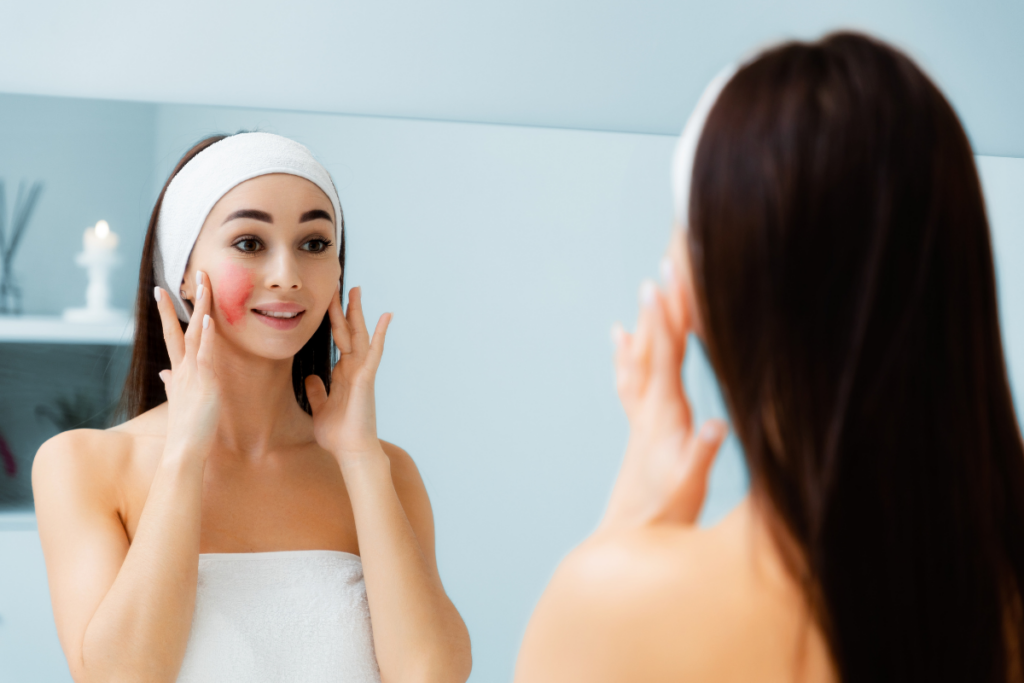
In addition to a normal, healthy skincare regimen, you might want to talk to your doctor about trying products or medications with specific rosacea-fighting ingredients.
Azelaic Acid
This powerful, natural ingredient can be obtained through topical medications or, in lesser strengths, over-the-counter creams, gels, and serums. Azelaic acid unclogs pores and kills bacteria on the face, preventing acne breakouts and treating rosacea flare-ups. It also evens skin tone and reduces redness.
It is one of the most effective and well-known treatments for rosacea.
Brimonidine
Another potent ingredient is brimonidine. In topical form, it is usually in a gel and is only available by prescription. This medication works by narrowing the blood vessels to reduce redness, flushing, and visible blood vessels.
Metronidazole and Other Antibiotics
Like brimonidine, metronidazole is only available by prescription. However, studies have shown it is highly successful in reducing papules and bumps while decreasing redness. Providers may also prescribe tetracyclines or other topical or oral antibiotics to maximize their effectiveness.
Ivermectin
Another prescription-only treatment, especially for rosacea type 2, is Ivermectin. This anti-inflammatory and anti-parasitic medication kills Demodex mites, which results in clearer, more even-toned skin. As with antibiotics, it may be prescribed topically or orally.
Over-the-counter Ingredients
Even though some products may not be targeted specifically for rosacea, many common ingredients help fight redness, heal and prevent blemishes, and protect your skin.
- Vitamin C — fights free radicals and protects skin
- Niacinamide (vitamin PP) — slows histamine secretion which limits the dilation of blood vessels to reduce redness and inflammation
- Vitamin K — corrects telangiectasias (spider veins) by sealing them
- Allantoin — heals and soothes
- Licochalcone — calms skin, evens skin tone, and improves redness
- Retinaldehyde (Retinal) — boosts skin cell turnover, treats and prevents acne, and decreases hyperpigmentation
- Green-tinted color-correcting makeup — being on the opposite end of the color spectrum from red, green counteracts rosacea’s visibility and evens hyperpigmentation
Whether you try prescribed medical treatment or OTC products, remember that most treatments take time to work. Plus, monitor your skin for negative reactions because many people with rosacea also have more sensitive skin.
If you don’t respond well to one product, talk to your provider or aesthetician about what to try next.
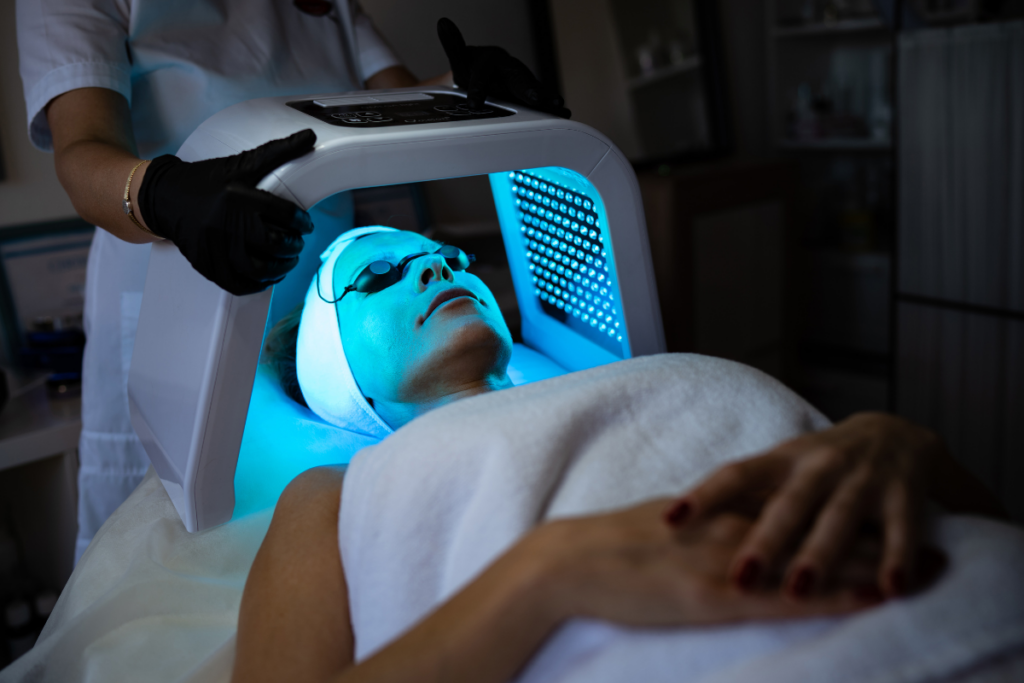
Facial Treatments
In addition to healthy skincare and beneficial products, many facial treatments can improve the different symptoms of rosacea types 1, 2, and even 3.
IPL (Intense Pulse Light) Therapy or Laser Therapy
Both IPL Photofacial and Varicose Vein Laser Treatment work well with rosacea. They damage the small blood vessels under the skin, cutting them off through cauterization, without burning the epidermis. Reducing the number of enlarged capillaries lessens redness and improves visible blood vessels.
Other types of laser therapy, such as Sublative Resurfacing, can also help to reduce discoloration and improve thickened skin. However, they can cause or exacerbate flare-ups for some people, so proceed with caution.
LED Light Therapy
While LED Light Therapy may not work for everybody and can take longer to see results, it is completely non-invasive and practically 100% safe. Many people have seen significant improvement with it, especially when combined with other treatments.
The LED light color you need depends on your symptoms. Blue decreases bacteria and treats pimples, green and yellow work well for treating redness and hyperpigmentation, while red decreases inflammation and speeds healing.
HydraFacial
One of the best and healthiest facial treatments available, the HydraFacial is an excellent option for all rosacea types. It exfoliates and removes debris without irritating your skin, and it provides hydration and protection while leaving your skin clean and fresh.
Although it doesn’t specifically address rosacea, its benefits help keep your skin cleaner and healthier, which can lead to less redness and fewer blemishes.
How to Prevent Rosacea Flare-ups
No matter how well you take care of your skin or how effective your treatments are, some common triggers may still cause rosacea flare-ups.
These differ for everybody, but some of the most common rosacea triggers are sun exposure and heat, stress, heavy exercise or physical activity, alcohol consumption, and spicy foods.
Of course, if you don’t know what yours are, you can’t avoid them to prevent flare-ups. The National Rosacea Society provides an excellent Rosacea Diary to keep track of the weather, what you eat and drink, and the daily activities and factors that can affect rosacea. (Click the link to download your free copy.)
By tracking these things, you’ll discover patterns in what causes flare-ups. While your triggers might not always be avoidable, knowing what they are will help you modify your habits and activities to reduce your symptoms.
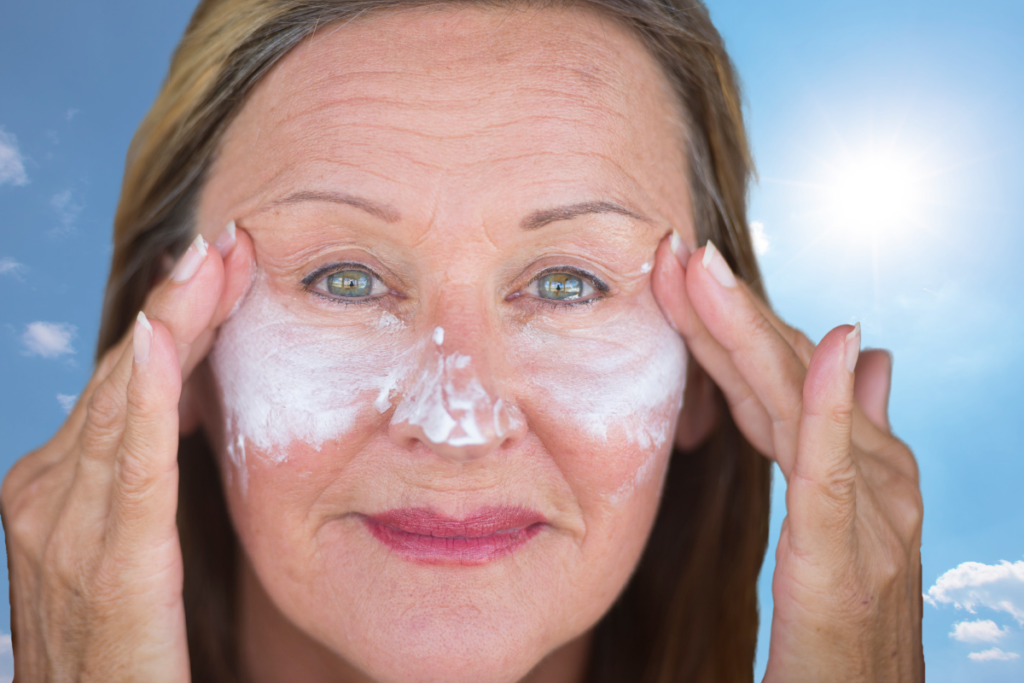
Understanding Rosacea Helps You Deal With It
Although rosacea does not typically lead to life-threatening problems, your face is the first thing people see when they look at you. If a skin condition makes you feel less confident in the world, it’s important to take care of yourself by finding a solution.
Aside from the fact that not treating it could lead to permanent damage, reducing the redness, bumps, and discomfort of rosacea will help you feel better about your skin.
Just remember that every treatment requires a bit of patience and trial and error. Don’t get discouraged if something isn’t working or even makes it worse. There are so many options available; one of them is sure to work for you!

Watermarked images were sourced from Dermnet on the following pages:
Rosacea Type 3
Rosacea Type 4
